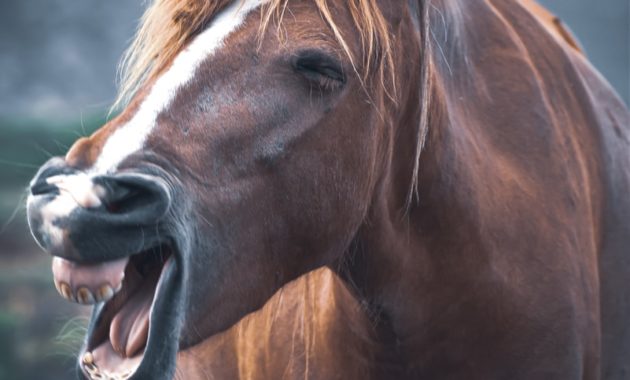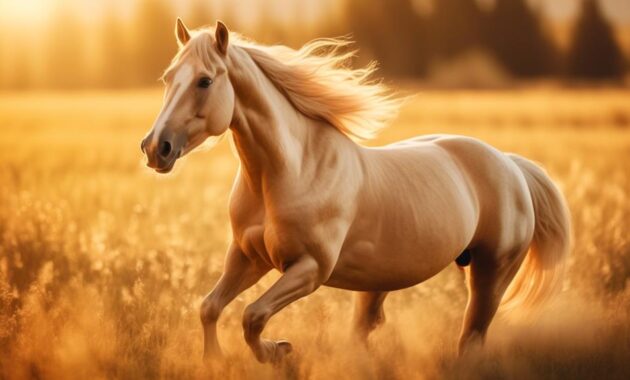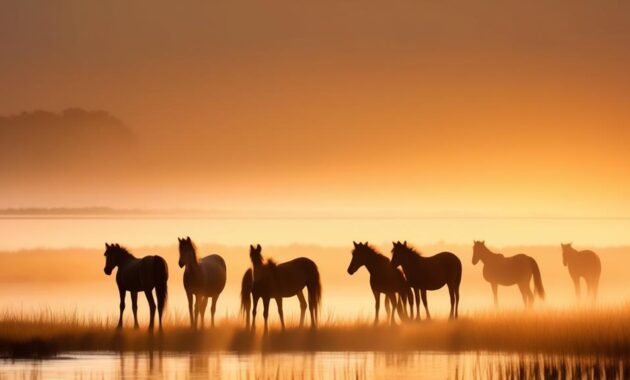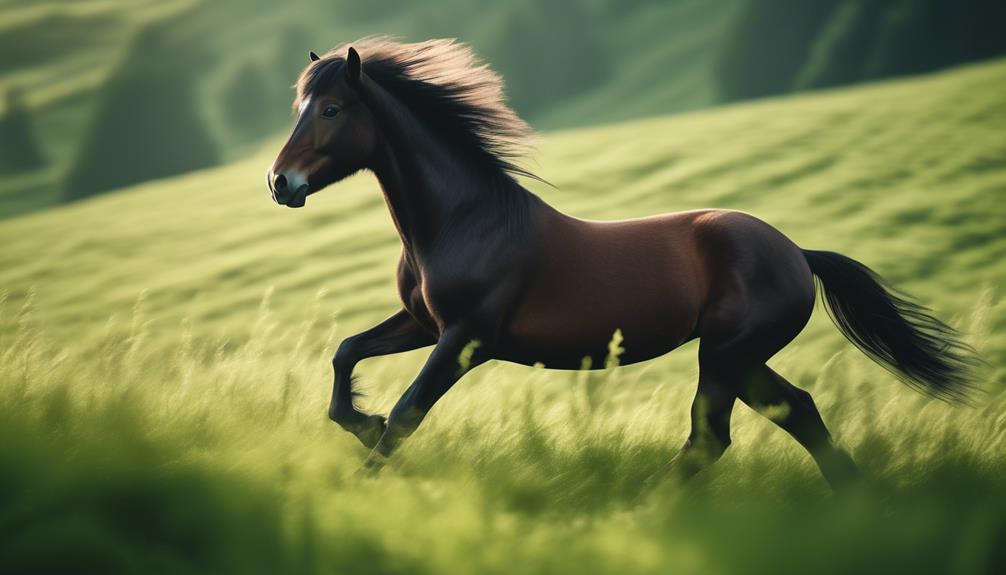
With a lineage that dates back to at least 1600 BC, the Welsh Pony is one of the oldest known breeds in western Great Britain. Bred throughout the hills of Wales, these ponies have not only survived the test of time but have thrived, becoming a beloved breed with a rich history and incredible versatility.
From their hardy and resilient nature to their elegant legs and excellent action, Welsh Ponies have captured the hearts of equestrians around the world. But there's more to these remarkable equines than meets the eye.
Stay tuned to uncover the fascinating history, unique traits, and wide range of abilities that make Welsh Ponies a breed worth exploring.
Key Takeaways
- Welsh Ponies have a rich history dating back to before 1600 BC in Wales.
- The Welsh Pony breed is divided into four sections, each with its own unique traits and characteristics.
- Welsh Ponies come in a variety of colors, but skewbald or piebald colors are not found in this breed.
- Grooming Welsh Ponies is relatively easy due to their small stature, and regular grooming sessions help maintain their health and strengthen the bond between pony and owner.
Bred in Wales for Centuries
Bred for centuries in the hills of Wales, Welsh Ponies have a rich history that showcases their resilience and versatility.
These ponies were originally bred in western Great Britain and the Welsh Cob, a predecessor to the Welsh Pony, can be traced back to Wales before 1600 BC.
The climate and terrain of Wales greatly influenced the temperament and action of the breed.
In 1901, the Welsh Pony and Cob Society was created to promote and preserve the breed.
Over time, Welsh ponies were crossed with Hackneys, Thoroughbreds, and Arabians to enhance their characteristics.
Today, the Welsh Pony breed is divided into four sections, each with its own unique traits and abilities.
Welsh Ponies are known for their intelligence, agility, and endurance, making them suitable for various equestrian disciplines.
Four Distinct Sections of the Breed
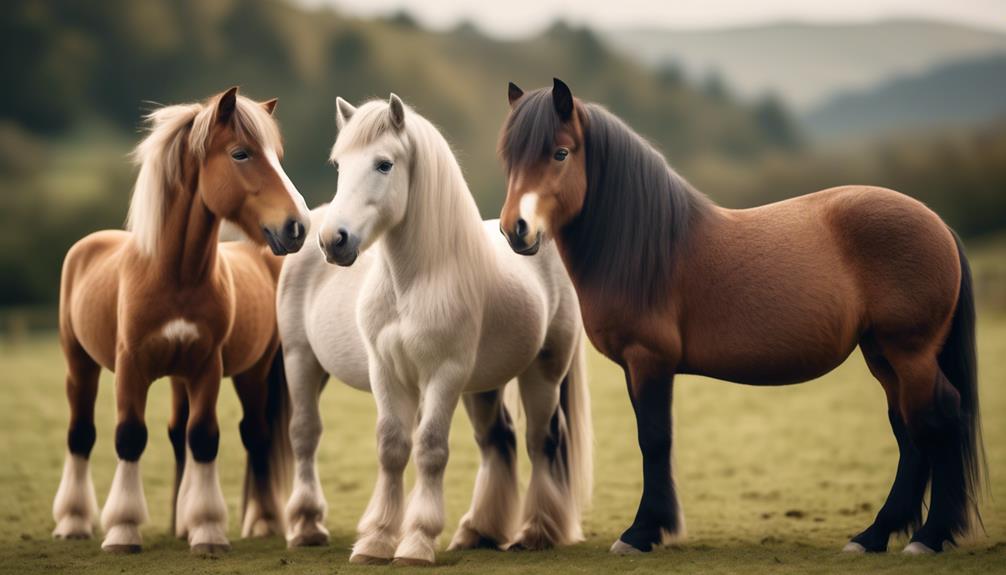
With their rich history and diverse breeding, Welsh Ponies can be divided into four distinct sections that showcase their unique traits and abilities.
The first section is the Welsh Mountain Pony, also known as Section A. These ponies are intelligent and make ideal companions for children. They've elegant legs and delicate heads, making them visually appealing as well.
The second section is the Welsh Pony of Riding Type, or Section B. These ponies excel in riding and have great jumping talent. With their excellent action and sloping shoulders, they're a popular choice for equestrians.
The third section is the Welsh Pony of Cob Type, known as Section C. These ponies are versatile and hardy, suitable for riders of all levels. They've a compact body and muscular legs, allowing them to perform well in various disciplines.
Lastly, we've the Welsh Cob, or Section D. These ponies are wonderful riding horses with endurance and courage. They've strong hind legs, quarters, and feathering at the heels.
Describing the Welsh Pony and Cob Stud Book
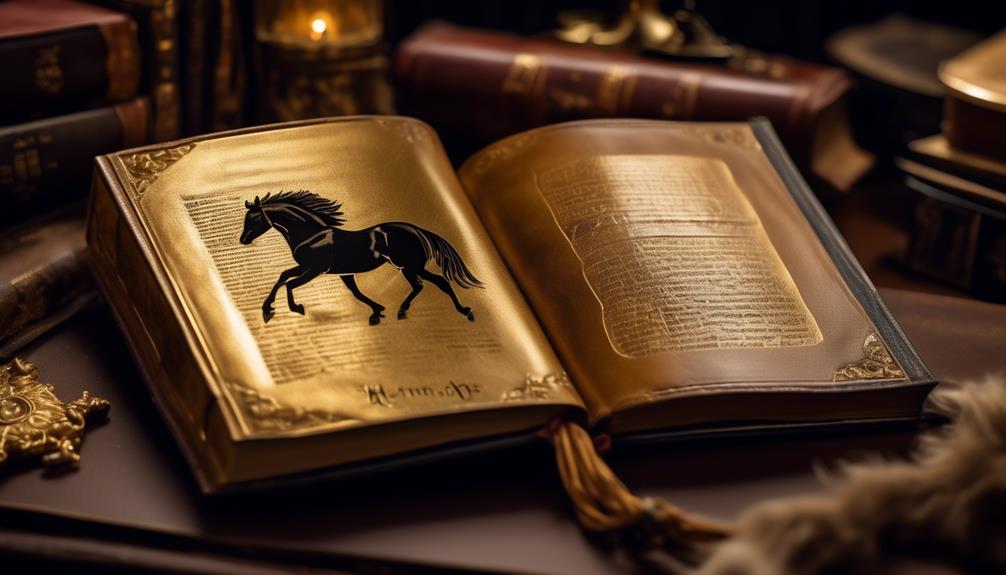
The Welsh Pony and Cob Stud Book is a comprehensive registry that documents the lineage and characteristics of the Welsh Pony and Cob breed. This important registry provides valuable information for breeders, owners, and enthusiasts, ensuring the preservation and development of the breed.
The Welsh Pony and Cob Stud Book serves as a testament to the rich history and versatility of these remarkable animals. With its meticulous records and detailed descriptions, the Stud Book allows for the identification and recognition of exceptional individuals within the breed.
It provides a platform for breeders to make informed decisions and promote the best traits of the Welsh Pony and Cob. Moreover, the Stud Book instills a sense of pride and connection among those who are passionate about these magnificent creatures.
Exploring the Array of Colors
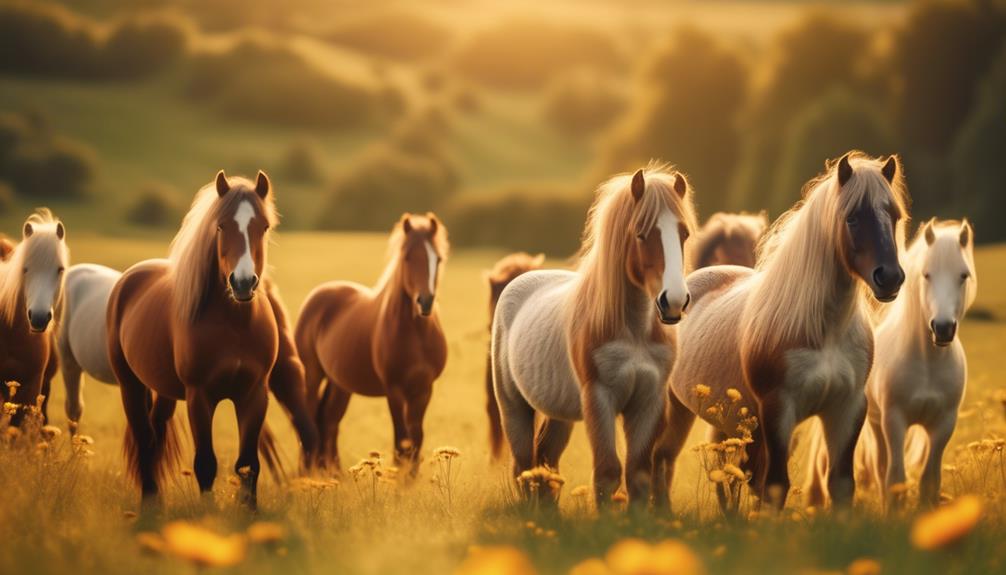
The Welsh Pony and Cob Stud Book not only provides a comprehensive registry of lineage and characteristics, but it also documents the wide range of colors found within this versatile breed. Welsh Ponies can come in various equine colors, adding to their appeal and beauty. Some of the common colors seen in Welsh Ponies include brown, grullo, palomino, chestnut, bay, gray, black, and dun. However, it is important to note that skewbald or piebald colors are not found in Welsh Ponies. To give you a visual representation of the stunning array of colors, here is a table showcasing some of the different colors found in Welsh Ponies:
| Color | Description |
|---|---|
| Brown | Dark brown coat |
| Grullo | Grayish-brown coat with a dun factor |
| Palomino | Golden coat with a creamy mane and tail |
| Chestnut | Reddish-brown coat |
| Bay | Brown coat with black points |
With such a diverse range of colors, Welsh Ponies are sure to capture the attention and admiration of horse enthusiasts everywhere.
Easy Grooming for Small Stature Ponies
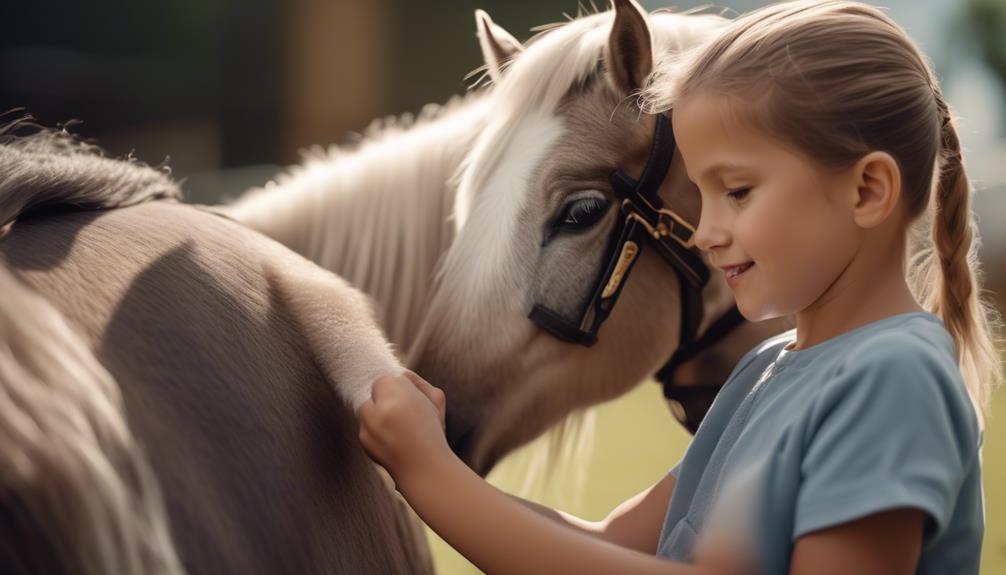
Grooming small stature ponies is a breeze due to their compact size and easy-to-maintain coats. These adorable ponies require minimal effort in their grooming routine, making it a joy for both the pony and the owner.
Here are five reasons why grooming small stature ponies is so easy:
- Less time-consuming: With their smaller size, grooming these ponies takes significantly less time compared to larger breeds.
- Mane and tail maintenance: Their shorter manes and tails are easier to detangle and keep looking neat and tidy.
- Easier to handle: Maneuvering around their petite frames is effortless, allowing for more precise grooming.
- Limited shedding: Their coats tend to shed less, resulting in less hair to brush and clean up.
- Bonding opportunity: Grooming sessions provide a great opportunity to bond with these gentle and affectionate ponies.
With these benefits, grooming small stature ponies becomes a pleasurable and stress-free experience for both pony and owner.
Historical Significance of the Welsh Cob Society
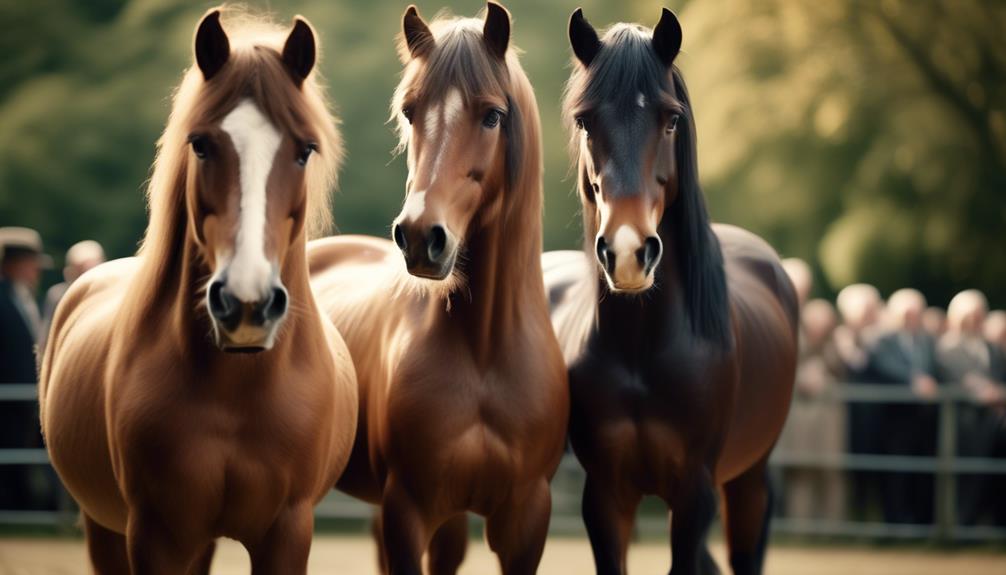
With its establishment in 1901, the Welsh Cob Society holds a significant place in the rich history of the Welsh Pony breed. The society was formed with the aim of preserving and promoting the Welsh Cob, which is known for its versatility and hardiness. Over the years, the society has played a key role in maintaining the breed standards and ensuring the integrity of Welsh Cobs through its stud book. It has also organized numerous shows, events, and competitions to showcase the breed's capabilities and celebrate its achievements. The Welsh Cob Society has been instrumental in fostering a sense of community among Welsh Cob enthusiasts and has contributed greatly to the breed's popularity and recognition worldwide.
| Historical Significance of the Welsh Cob Society | |
|---|---|
| – Established in 1901 | – Preserves and promotes the Welsh Cob |
| – Maintains breed standards | – Organizes shows and competitions |
| – Fosters a sense of community | – Contributes to breed's popularity |
Versatility in Riding and Competitive Disciplines
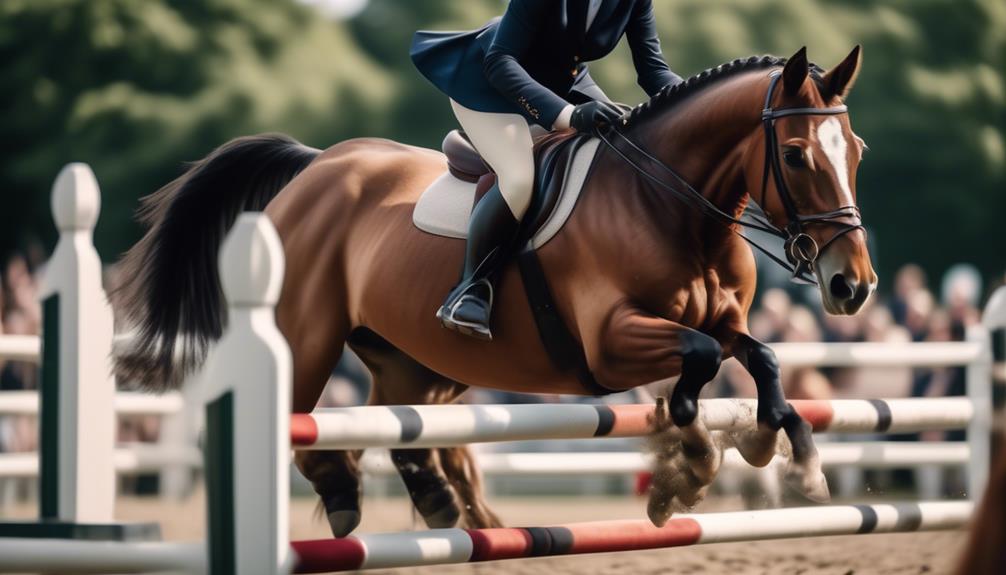
Welsh Ponies demonstrate exceptional versatility in various riding disciplines and competitive events. They're known for their ability to excel in a wide range of activities, making them a popular choice among equestrians.
Here are five reasons why Welsh Ponies are highly sought after in the equestrian world:
- Agile and Athletic: Welsh Ponies have a natural agility and athleticism that enables them to perform well in disciplines such as dressage, show jumping, and eventing.
- Versatile and Adaptable: Whether it's trail riding, pleasure riding, or driving, Welsh Ponies can easily adapt to different disciplines and excel in each one.
- Competitive Spirit: These ponies have a strong competitive spirit and a desire to please their riders, which makes them excellent contenders in competitive events.
- Suitable for All Ages: Welsh Ponies are known for their gentle and kind nature, making them suitable for riders of all ages, including children and adults.
- Eye-catching Presence: With their elegant and compact build, Welsh Ponies have a captivating presence that catches the attention of judges and spectators alike.
Frequently Asked Questions
What Are Some Common Health Issues That Welsh Ponies May Face?
Welsh ponies commonly face health issues such as laminitis, obesity, dental problems, and respiratory conditions. Regular veterinary check-ups, proper diet, dental care, and exercise can help prevent and manage these issues to ensure the pony's overall well-being.
How Tall Can Welsh Ponies Typically Grow?
Welsh ponies can typically grow to various heights depending on the section they belong to. Welsh Mountain Ponies (Section A) are the smallest, while Welsh Cobs (Section D) can reach a larger size.
Are Welsh Ponies Suitable for Beginners or Inexperienced Riders?
Yes, Welsh ponies are suitable for beginners or inexperienced riders. They have a gentle temperament and are known for being intelligent and versatile. Their smaller size also makes them more manageable for inexperienced riders.
Can Welsh Ponies Be Used for Dressage or Other Competitive Disciplines?
Yes, Welsh ponies can be used for dressage and other competitive disciplines. They are versatile and hardy, making them suitable for various equestrian activities. Their elegant movement and strong build make them well-suited for these types of competitions.
Are Welsh Ponies Known for Being Good With Children?
Welsh ponies are known for being good with children. They have a gentle temperament and are intelligent, making them ideal for young riders. Their small stature and versatility make them a popular choice for kids.
What Makes Welsh Ponies and Dales Ponies Versatile Breeds?
Welsh Ponies and Dales Ponies are known for their versatility in various disciplines due to their athleticism and intelligence. Their strength and endurance make them suitable for riding, driving, and even agricultural work. Despite the endangered Dales Ponies: Northern England gems, both breeds continue to prove their adaptability and value in various settings.
Conclusion
In conclusion, Welsh Ponies are a captivating breed with a rich history and incredible versatility. Bred in Wales for centuries, these ponies have adapted to the climate and terrain, resulting in a hardy and resilient breed.
With their distinct sections and diverse abilities, Welsh Ponies have captured the hearts of equestrians worldwide. Their stunning appearance, agility, endurance, and courage make them excel in various equestrian disciplines.
Whether in riding or competitive disciplines, Welsh Ponies continue to impress with their elegance and skill.

